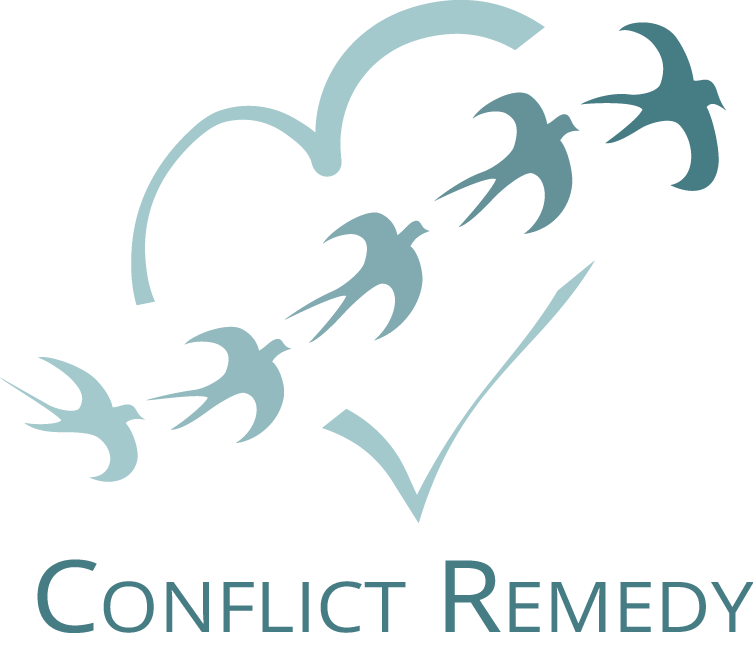
Photos by Jay Ee on Unsplash
and ThisisEngineering RAEng on Unsplash
Do You Need a Framework or a Formula for Navigating Conflict?
I spoke with someone recently who was looking for a conflict coach for a colleague of hers. I knew pretty quickly that it would most likely not be a good fit, when she told me. “He is highly logical, understands the problem and just wants solutions.” Now, it is possible that her colleague has robust conflict transformation awareness and truly does see the problem clearly. But in my work, I find it a dangerous assumption.
We think we understand what happened, but ignore other stories.
As I explained to her, and as I have written about in other blog posts, it is human to craft and tell ourselves a story about what happened in a conflict. The story fits the events from our perspective, but we often miss a lot. We think we understand what happened, but ignore other stories, other narratives that could be just as true. I told her that I would want to explore the problem and his perspective, opening up the situation to more possibilities, before turning to solutions. I could tell she thought the process was far more cut and dried, that there were simple solutions once he laid out the problem to me clearly. To her, my explanation meant I didn’t know what I was doing.
I once had a contract for a big training project that didn’t go well for a similar reason. The participant employees really loved what I was sharing and teaching, but the HR director wanted me to present a formula, a series of steps and phrases that people could always follow in sequence to resolve an issue. When I explained that the process is far more nuanced, with components and a framework of inner awareness, outer actions, and skills training, he too didn’t appreciate the process.
Why do people want a simple formula?
I truly understand why people want a formula, a quick solution. It feels comforting to have simple steps to follow, simple words to say, that always work. The trouble is that human feelings and interactions are not often that easy to decipher. It takes curiosity, openness and willingness to navigate more complex conflicts effectively.
What really works.
When I first got trained and started looking for clients in this field, I took some marketing and business development classes. I had conflict transformation skills, but did not know much about running a business or finding clients. Various teachers asked me to come up with a demographic of my ideal clients and I found that challenging. Eventually, I did narrow down that I enjoyed working with leaders in companies and organizations. But in addition, I learned about another way to approach this—a psychographic profile. And that one I could come up with easily: I work best with people who are willing to look at their part and willing to change their thinking and behavior. Without that willingness, no formula will really work.
 Lorraine Segal has helped over 2000 leaders and others in organizations and corporations communicate more clearly, transform conflicts, and let go of resentments. The goal: to create a more harmonious and productive workplace. Through her business, Conflict Remedy, Lorraine creates customized training and coaching programs for non-profit organizations, corporations, and government agencies and Sonoma State University. She was recently named one of the top 15 coaches in Santa Rosa by Influence Digest. She is a contributing author to the book, Stand Up, Speak Out Against Workplace Bullying. Her latest project, a memoir called: Angels and Earthworms, an unexpected journey to love, joy, and miracles, is about her transformation from miserable self-doubt to self-acceptance, true love, spiritual awareness, and right livelihood. Find out more about the memoir here.Contact Lorraine through ConflictRemedy to request a free consultation for you and your organization or to sign up for her conflict remedy newsletter and blog.
Lorraine Segal has helped over 2000 leaders and others in organizations and corporations communicate more clearly, transform conflicts, and let go of resentments. The goal: to create a more harmonious and productive workplace. Through her business, Conflict Remedy, Lorraine creates customized training and coaching programs for non-profit organizations, corporations, and government agencies and Sonoma State University. She was recently named one of the top 15 coaches in Santa Rosa by Influence Digest. She is a contributing author to the book, Stand Up, Speak Out Against Workplace Bullying. Her latest project, a memoir called: Angels and Earthworms, an unexpected journey to love, joy, and miracles, is about her transformation from miserable self-doubt to self-acceptance, true love, spiritual awareness, and right livelihood. Find out more about the memoir here.Contact Lorraine through ConflictRemedy to request a free consultation for you and your organization or to sign up for her conflict remedy newsletter and blog.
Related blog post:
The Power of Story to Shift Conflict
Effective Conflict Management vs. a Quick Fix
